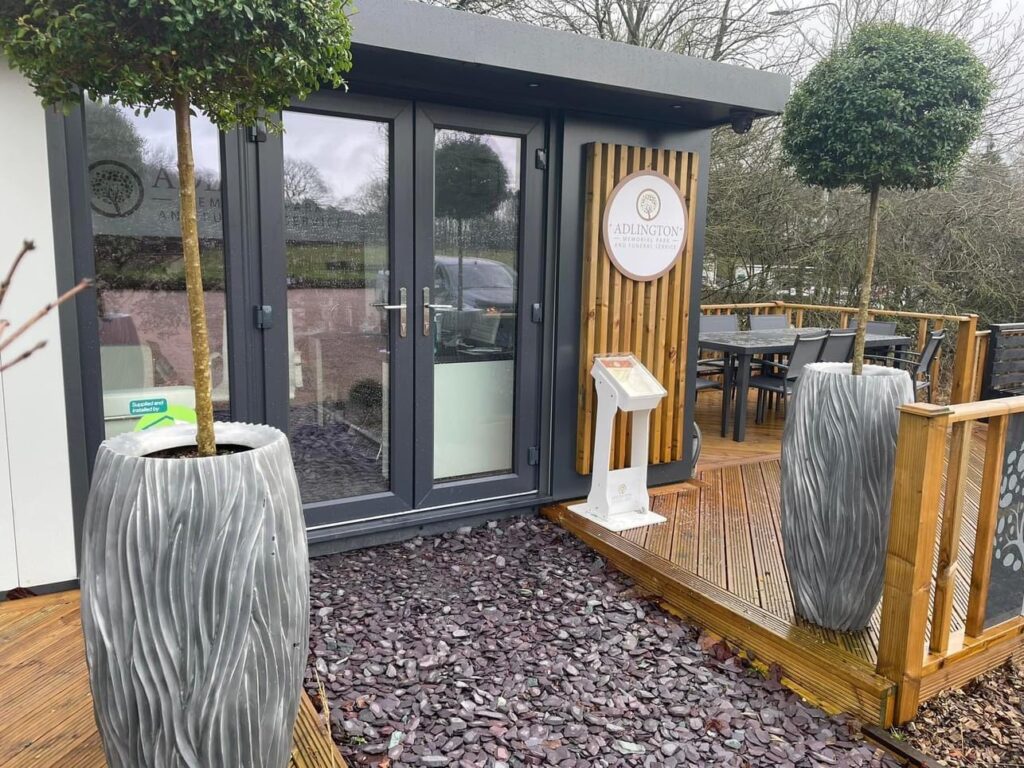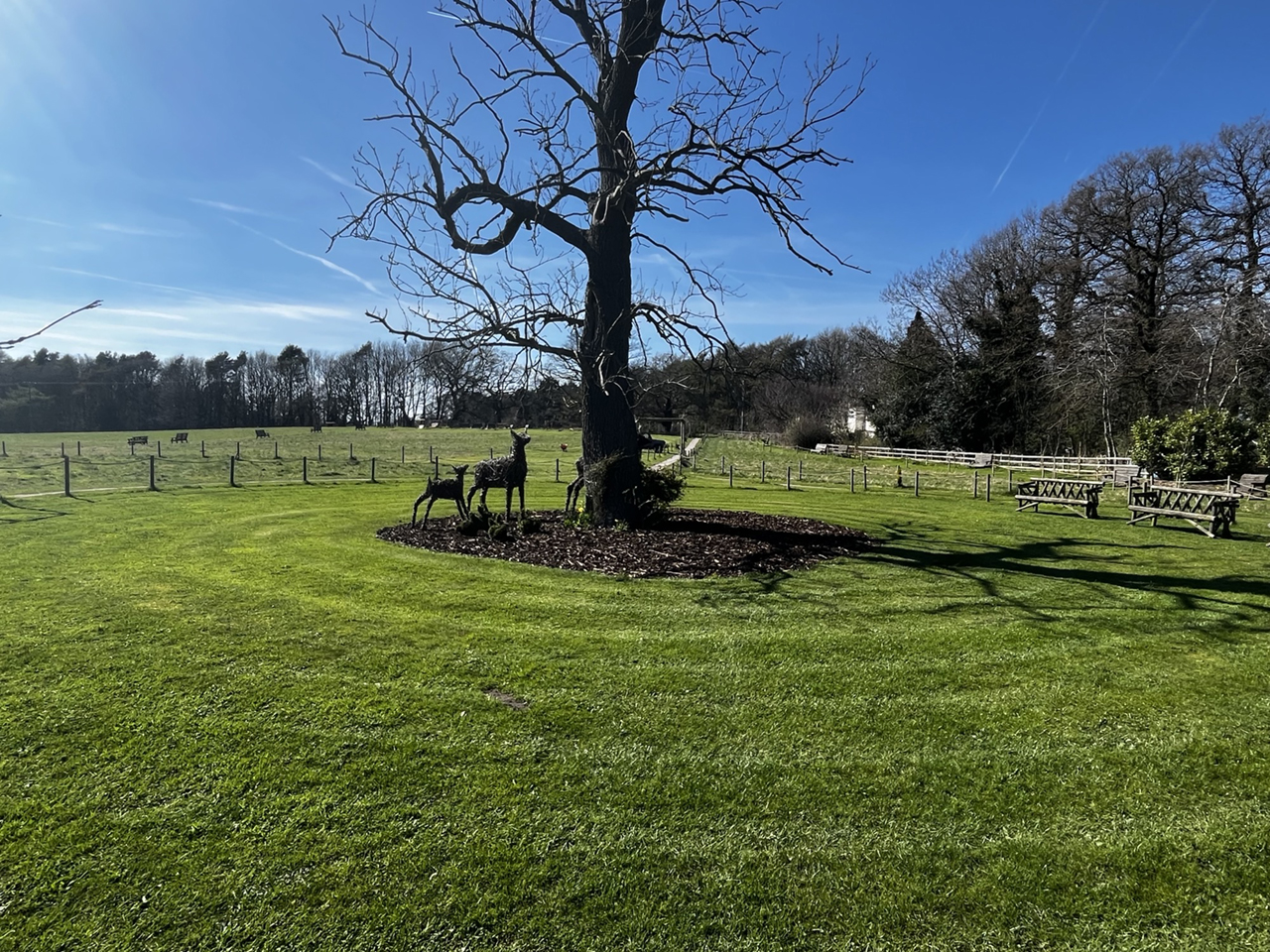Most people would like to think they play their part in caring for the environment during their lifetime, but that responsibility doesn’t end when the inevitable happens.
Death is the one great certainty in life and being laid to rest in an eco-friendly manner is arguably the ultimate parting gift.
It is why a growing number of people are opting for more sustainable funerals, from cardboard coffins and electric hearses to natural burials and even human composting, for themselves or loved ones.
“There is definitely a growing awareness that we need to take responsibility for ensuring what happens at the end of life is as eco-friendly as it can be, not only with regards to how we dispose of a body, but all the things that are an important part of the funeral that can be done in different and more sustainable ways,” says Julie Dunk, chief executive of the Institute of Cemetery and Crematorium Management.
There are just over 300 crematoria in the UK and cremations account for approximately 78 per cent of all funerals. Although regarded as an efficient form of disposal, the impact on the environment can be hugely detrimental. The Guardian reports that cremation, on average, releases 400kg of CO2 into the atmosphere per body, but Dunk says it’s quite difficult to measure and not a simple equation.
“Although there are studies that show how much gas or electric is used to cremate the body that tends to be on a single cremation. If you’ve got a busy crematorium that’s doing a lot of cremations, the gas consumption goes down because the cremators remain relatively hot. It becomes a problem if a crematorium isn’t busy and heating up the cremator for one or two cremations. That is where it increases the carbon footprint and of course we need to reduce that wherever possible.’
The new Huntingdon Crematorium, north of Cambridge, is managed by the town council and considered a leading example of how green crematoriums can work.
“There are two electric, rather than gas, cremators. They’ve also installed an efficient heat recovery system, so any surplus energy produced from the cremators is recycled to heat the chapel and buildings, as well as the greenhouses onsite where they grow bedding plants for the borough,” explains Dunk.
But an entirely new form of cremation is widely tipped to become the go-to process within the next decade. It is called alkaline hydrolysis, or water cremation.
“The body is placed in a chamber and an alkali-based solution introduced that helps to break the body down. It doesn’t require as much energy as traditional cremation and produces fewer pollutants. It also generates an ash-like material that people can scatter or bury, as they would with traditional cremation,” says Dunk.
Although Resomation, a manufacturer of water cremators, does not currently have water cremation installations in the UK, a facility in Northumberland is rumoured to be opening this year.
But it is not only cremations that can harm the environment – burials do too, from embalming to coffin materials – and there is also the logistical issue of space, or lack of it. It is why interest in natural organic reduction, or human composting, is growing.
“The body is placed into a chamber with natural, biodegradable materials and over time, approximately within 30 days, the nutrients in the chamber help to break the body down [into nutrient-dense soil],” says Dunk.
“It’s a bit like burial but sped up and monitored to ensure everything is going to plan. The energy input is absolutely minimal, and there are no harmful emissions, so it is a very green way of disposing of the body.”
“There are no upright headstones, so it doesn’t look like a graveyard. It feels like a park and families often bring picnic baskets, flasks of tea and coffee and now and again the odd bottle of pinot.”
Although it is not currently available in the UK, human composting is legal in Sweden and some US states, and is expected to be available here at some point in the future as sustainable options become more mainstream.
In the meantime, woodland or natural burials continue to become increasingly popular. Although similar to traditional interment, natural burial involves a biodegradable coffin (seagrass, wicker, woollen, or even a shroud, for example), a shallow grave to aid decomposition, and no permanent memorial.
The burial site is typically located in woodland, meadows, or orchards, where the body is literally and symbolically returned to the earth. There is no lasting damage on the environment. If anything, this type of burial helps the natural world to flourish.
“The return to nature is a strong attraction as people can be laid to rest in a beautiful place surrounded by wildflowers, trees and open air,” says Mark Simpkin, managing director of the family-run Adlington Memorial Park in Cheshire.
At 26 acres, it is one of the largest natural burial grounds in the UK.
“There are no upright headstones, so it doesn’t look like a graveyard. It feels like a park and families often bring picnic baskets, flasks of tea and coffee and now and again the odd bottle of pinot to enjoy whilst remembering their loved one,” he says.

“It was designed from day one to be based around the sight, sound and smell of nature. The wildflower meadow contains many different species. We have borders of rosemary, lavender, thyme and camomile – everything is done to encourage insects and bees for pollination. We have our own hives and produce our own honey. This year we’re planting an apple orchard, so next year we will have apple juice and cider. And if a family chooses to plant a tree in memory of a loved one then I encourage them to get involved with the actual planting. It’s good for their grieving process.”
Although there are numerous natural burial sites in the UK, Simpkin notes not all are made equal (“some are just add-ons to council or church-run sites”), so he advises asking lots of questions .
Dunk agrees it is best to be curious to before making any decisions.
“If we are looking to be more eco-friendly, it is not just the actual funeral – it is what happens afterwards that is important. People might think their only choices are traditional burial or traditional cremation, but there is a whole range of options out there. It is about being able to go to the funeral director and say, ‘How can we make the funeral as green as possible?’ and encouraging people to find out what’s available in their area.”
Slow the process
“I think we’re much better at talking about death than we like to pretend. It’s much less of a taboo than something like class or money,” says Rupert Callender, founder of the Green Funeral Company and author of What Remains?
A funeral director for over 20 years, he advises people to not overly plan their own funeral and for family to take their time when organising the final farewell for a loved one.
“That time between somebody dying and the funeral, when you are working out how to say goodbye to someone, is an important part of the grieving process and one that can be incredibly rewarding and healing,” he says.
“Even if a death is expected, it still comes as a shock, so when the inevitable happens, realise you’re in control, slow the process down and find a funeral director that is the right fit. Don’t get steered into something you later wish you hadn’t done – and get as much information and support as possible.”



Leave a reply
Your email address will not be published.